Review of Blade Runner: The Final Cut - Ultimate Collector`s Tin Edition (5 Discs)
Introduction
Forgive me if I quote myself…
"O.K Warner Brothers, here`s my wish. 2002 is the 20th anniversary of the film. I would like a 2-disc release. On a dual layered disc I want the film, cleaned up and restored with a Dolby 5.1 Soundtrack and Director`s commentary. Make use of all of the space, no bytes left over. On another disc, I want documentaries and trailers and deleted scenes galore. I`ll be happy with around 3 hours of riveting material."
That`s what I wrote after looking at the first Blade Runner DVD release in the UK, a single layered disc that was little better than a VHS. The twentieth anniversary came and went, with nothing but litigation and conflict to speak of. The years passed, half a decade in all, and new display and disc formats were invented. It looked as if my dream DVD would never come. Yet by the time the 25th anniversary was upon us, all those legal woes were distant memories, and what has come is literally beyond my wildest dreams. Not a two-disc set, but a five-disc tin, cleaned up image yes, 5.1 soundtrack yes, but now we have Ridley Scott`s brand new Final Cut, The Original Theatrical Cut, The International Cut, The 1992 Director`s Cut, and The Workprint version, we also have a brand new 3½-hour documentary on one disc, and a whole other disc full of extras, and we have commentaries, plural. As a Blade Runner fan, I still whimper just thinking about it.
If you`ve been locked on the other side of the Tannhauser Gate for the last 25 years, here`s a brief précis of the story.
The year is 2019. The world is a rundown, polluted place, with only the detritus of mankind left behind to dwell in the urban decay. The rich and affluent have the Offworld colonies to look forward to. But no self-respecting rich person is actually going to do the work to make a new life. For that purpose, man has invented the Replicant, a short-lived artificial life form to take on the burden of all the dangerous work of space exploration and colonisation. Stronger than humans, faster, more intelligent, they are also a threat to their masters, which is why replicants are prohibited on Earth, sentenced to `retirement` on sight. For that purpose there is a special sort of policeman, a licensed hunter known as a Blade Runner. Rick Deckard was one such man, who after a career of slaughter is trying to find a bit of peace in his life. All that changes when a group of Nexus 6 replicants escape to Los Angeles. The Nexus 6 model is advanced, and even capable of emotional response. They are the top of the range product from the Tyrell Corporation, but these four have a particular and lethal interest in their creators. Deckard is brought back in to hunt these four down. He starts by going to the Tyrell Corporation to find out more, but it`s the start of a personal journey that will have him questioning the meaning of his own existence.
With five versions of the film, we are certainly spoilt for choice. I won`t go through every difference, half the fun is finding them for yourself, but generally what we get are…
Disc 1
The Final Cut
This is the definitive version of the film, or rather the version that Ridley Scott has personally overseen the creation of, and signed off on, as the closest to his vision. Although he wasn`t responsible for the "Director`s" Cut, it`s fair to say this is more of a tweak than a major reedit of the 1992 version. Naturally the film has been to the proverbial laundrette, and is as clean and shiny as it can be. Some of the special effects have been updated, some alterations made to the dialogue, the violence has been upped slightly, and errors have been corrected. If you`re wondering, there`s no narration and no happy ending, as if they would go back in!
Disc 3
Seamless branching that is actually seamless. That`s almost more impressive than the content itself, but on this disc you will find…
The Theatrical Cut
This was the version that was released in the US back in 1982. Test audiences didn`t `get` the movie, so it was decided to give it a helping hand with a voiceover from Harrison Ford, as well as a nice shining happy ending. People didn`t want to be depressed in 1982, that`s why ET ruled the box office.
The International Theatrical Cut
Apparently we Europeans can stomach a little more gore than our American cousins, or rather this was the era of the `video nasty` phenomenon. Anyway, the Theatrical Cut got 14 seconds of extra footage, a little more violence to sate our bloodthirsty palates. There`s not a lot of difference between the two, but this is the version that lived in video for all those years, and what kept interest in the film alive.
The 1992 Director`s Cut
The voiceover didn`t work, the happy ending was completely out of place, and the director`s vision had a unicorn in it. You would think that a Director`s Cut was in order, but this version was made with little or no input from Ridley Scott. And while it fixed the aforementioned issues, certain problems and visual gaffes remained. Still, this was the version of the film that many others and I fell in love with. It also turns out to be remarkably close to the Final Cut, except for some pacing issues.
Disc 5
The Workprint
This is one of the earliest cuts of the film, those that were tested on select audiences, only to elicit the responses that led to the voiceover and the happy ending. It`s a little shorter, some of the cuts are different and there are one or two surprises. It is most definitely the same film though. What is interesting is that this was shown at a 1991 70mm film festival instead of the theatrical cut, and the response to this version prompted the Director`s Cut a year later. It must have been a hell of a revelation to see a version of the film without the happy ending, and with only a single line of narration.

Video
Disc 1
When I was eleven, my dad took me to the doctor. I was complaining of headaches and my school grades were slipping. It turned out of course that I needed glasses. It was like the whole world opened up for me when I put those specs on. I had decided to forego the Director`s Cut re-release last year in favour of waiting for this boxset, so prior to this I had only seen the original single layered DVD of the Director`s Cut. Watching the Final Cut felt again like I had put glasses on for the first time.
It`s a 2.40:1 anamorphic image that is crystal clear, pin sharp and an absolute joy to behold. For two hours I couldn`t take my eyes off the screen, it was as if I was experiencing this future world for the first time, picking up details and imagery that had been passing me by all these years on faded VHS and lacklustre DVD. It turns out that the blue stain under Zhora`s ear is actually the tattoo of a snake! You can now see every wrinkle on poor old Sebastian`s prematurely aged face. There are plot points and visual information to be seen that were simply obscured on the original release, and given that Blade Runner is such a visual film, so dependant on the audience picking up on hints and clues that this transfer is seriously overdue. I realised that in the opening scene, when Leon is undergoing the Voigt-Kampf test. This time around you can see his reactions, the stress building up before he snaps, with a degree of clarity that was never available before.
Blade Runner is so dense in visual information, and set in a dark murky future underworld, that there is always the concern that the DVD can`t keep up. I didn`t spot any signs of compression though, no indication of edge enhancement or other such difficulties. There is a lessening of detail in the mistier, murkier scenes, but that is to be expected, and the film is 25 years old. There`s no getting rid of a slight graininess, nor would you want to. The image is stable throughout and absent any print damage. This is the best that Blade Runner will ever look on DVD.
Disc 3
With seamless branching, all three versions of the film on this disc are working from the same print. And were Blade Runner released this way; there would be no complaints. The transfer is excellent. It`s just that comparing it to the revamped Final Cut that the age becomes more apparent. There is a smidgen of print damage evident, and colours aren`t as vibrant or as well defined. You`ll also note that grain and other print artefacts markedly impinge on the effects shots.
Disc 5
The Workprint suffers the most when it comes to the visual transfer. The image is clear and mostly stable, and like all the other versions, scratches, dust and blips have been reduced to a negligible level. But it is much more creased. It`s a 2.20:1 anamorphic transfer (leading from the 70mm presentation), and the image is faded and washed out, and much of the film suffers from a constant horizontal stain.
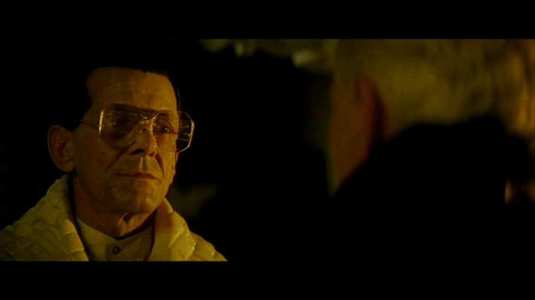
Audio
Disc 1
DD 5.1 has been a long time coming for this film, but by golly they got it right. They went back to the original sound elements to create this track and all of a sudden I was living in Los Angeles of 2019. The Final Cut gets DD 5.1 English, Spanish, German as well as a 5.1 Polish voiceover. I lost count of the subtitle options. The dialogue is clear throughout, the surround immerses you in the film, spinners zip by, Deckard`s gun positively explodes into action, the crowded streets of LA envelop you, and then there is the unspeakable beauty of the Vangelis soundtrack. As visually imaginative as the film is, it`s no less so when it comes to the sound design.
Disc 3
The three prior versions of Blade Runner get DD 5.1 English tracks, as well as DD 2.0 Surround English, German, and Spanish. There are subtitles in those languages, as well as HOH English and German, with the addition of Danish, Swedish, Norwegian and Finnish. Naturally with seamless branching, you can`t change any of the tracks on the fly; otherwise you could end up watching the Director`s Cut with a voiceover. All selections have to be made from the menu screens.
Disc 5
There is just a DD 5.1 English track for the Workprint, although once again there are many, many subtitle tracks. It`s not as vibrant or as well defined as for the other cuts, but the dialogue comes over clearly. What`s interesting about this version is that background chatter takes on much more of a prominent role. You can hear the police radios, the constant ambience of adverts, and the street bustle to a greater degree. There are also some changes in dialogue to watch out for. You can play a little game working out the movies that supplied the temp soundtrack towards the end of the film. Planet of the Apes is an easy one to guess, but it turns out that I wasn`t as wrong as I thought when I heard the echoes of Star Trek II in there.
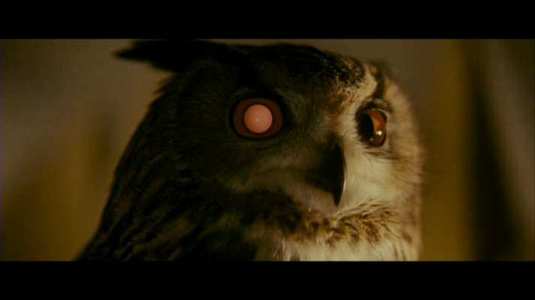
Features
I hate the artwork for the Final Cut. It`s bright, it`s garish, and it`s messy and it isn`t a patch on the original cover art. Fortunately we don`t get that here. We get a nice shiny embossed tin that has a tactile attractiveness to it.
Inside you get a plastic thing. It`s one of those things that if you tilt it and look at it in a certain light, you can see a sequence of frames from the film play out. It`s the sort of thing that you usually find in cereal boxes, but much more substantial and weighty.
The discs are contained in a digipack that is kept in a slipcase that mirrors the box art. Instead of one disc to a panel, we have discs 1 & 2 overlapping in one panel, 3 & 4 in another, and disc 5 by itself. I`m not fond of overlapping discs; they`re a nightmare to get out without scratching them, although this is nowhere near as awkward as the metal tin cases used for titles like Kingdom Of Heaven.
The digipack is decorated with production art, and stills from the film. Tucked to one side you`ll find a booklet that lists the discs` contents, as well as prominently displaying some character images.
There is a letter introducing the set from Ridley Scott. It`s printed on clear acetate, so you may want a white background to make reading it easier. Or one of those projectors they used to have at school.
There are eight art cards contained in a wallet, showing conceptual art and storyboards from the film. On the reverse side is a brief caption explaining what you are looking at. Incidentally, there is more concept art printed on the inside of the wallet, but to get a good look at it, you`ll have to tear it apart.
Disc 1
The Final Cut begins with a 30 second introduction from Ridley Scott, a brief explanation of what was done to the film, and why it`s his preferred version.
There are three commentaries to go with the Final Cut, beginning of course with the Director`s commentary. I have no end of time for Ridley Scott`s commentaries. I wasn`t expecting to, but I wound up sitting through this film twice in a row when I decided to sample some of his comments. Scott is a voluble, and informed speaker, but most important of all he is interesting and charismatic. It`s an ideal characteristic in a director, as when he speaks, you listen. And while he isn`t strictly scene specific on the film, he talks about every aspect, from the story to the cast, the execution of his vision, as well as the changes made to the film. He also has some interesting comments on the state of Hollywood today that I wish people with chequebooks would pay attention to.
For more information about the writing of the film, as well as the troubled production, there is a commentary from co-writers David Peoples and Hampton Fancher. Fancher is also an Exec Producer, and joining them are Producer Michael Deeley and Production Executive Katherine Haber.
If you want to know all about the futuristic sets, the special effects, the miniatures and model work then the commentary with Visual Futurist Syd Mead, Production Designer Lawrence G. Paull, Art Director David L. Snyder and Special Effects Supervisors Douglas Trumbull, Richard Yuricich, and David Dryer, is what you are looking for.
The commentaries could have used subtitles, but everyone speaks clearly enough.
Disc 2
Dangerous Days: Making Blade Runner
This is a substantial second disc to say the least. Lasting 3 hours and 35 minutes, this documentary, made by Charles de Lauzirika takes us from beginning to end with the Blade Runner story, with input by the filmmakers, actors, producers, critics and people inspired by the film. It`s presented in 1.78:1 anamorphic; with DD 2.0 sound and countless subtitle tracks. You can watch it all in one go, or by going to the scene selection, you can watch it as a series of featurettes of approximately half an hour each.
We start with the genesis of the film, the script writing process and the deal making that led to many of the production woes associated with the film. We then go on to the casting process, and it`s interesting to see some of the alternate names considered for Deckard. There are some screen tests here, as well as the truth behind what happened to that elusive fifth replicant (stupid writers strike!). Next up is a look at the pre-production, the art, costume, and set design that all went into making this future world real, before cameras had even started rolling. And then the nightmare begins, as production starts. There is a look at early days of filming, the work ethic, the reining of the budget by shooting at night, with smoke and rain. This segues neatly into the tensions that developed between director and crew, the difficulties the actors faced, and the clash between director and producers. Things settle down when it comes to the special effects, and how they were realised on film. Blade Runner was on the verge of the effects revolution, the last film to use old-fashioned in-camera effects, while continuously innovating with new ideas and methods. Post production takes a look at `that` voiceover, with some interesting outtakes, and we end with the film`s release, the mixed reviews and the lukewarm audience response, before the video age came and saved it, and at the same time inspired many of today`s leading filmmakers. Throughout all this there are glimpses of alternate and deleted scenes, as well as plenty of behind the scenes footage.
Disc 3
All three versions of the film on this disc each gets its own introduction from Ridley Scott, around 30 seconds apiece.
Disc 4
A whole other disc full of extras to savour. The animated menus offer four options, as well as a subtitle select menu.
Access lets you play all the featurettes in one go, all 2 hours and 14 minutes worth of them. This doesn`t include the deleted scenes, audio content, trailers or the 1982 featurettes. You`ll have to go to the other menus and select them from there.
Inception takes a look at the author of "Do Androids Dream Of Electric Sheep?" Philip K. Dick. There are three segments to this.
The Electric Dreamer: Author Philip K. Dick lasts 14 minutes, and it presents a view of this visionary author, with comments from other writers and his children. There is also some archive footage of an interview with him.
Sacrificial Sheep: The Novel vs. The Film lasts 15 minutes. Naturally when books are adapted for film, large changes have to be made. This looks at the similarities between the book and the film, which are outweighed by the differences.
Philip K. Dick: The Blade Runner Interviews. This is 24 minutes of audio. Between 1980 and 1982, while the film was in production, Paul M. Sammon recorded a series of interviews with Dick about the film, and his reaction to it, and the atmosphere in Hollywood. It`s telephone quality audio, there are no subs, but everything is audible. It`s fascinating to hear his conversion from cynical sceptic to being absolutely blown away by the test footage.
Fabrication takes us behind the scenes with a series of retrospective featurettes.
Sign Of The Times: Graphic Designer (14 minutes) looks at all the various signs, labels and adverts that made up the background of this future world. Tom Southwell, Production Illustrator takes us through some of the work that he did on the production.
Fashion Forward: Wardrobe And Styling (21 minutes)
Michael Kaplan worked with Charles Knode dressing the characters of Blade Runner. Here he goes through the various looks for the cast, along with the actors own personal input on the costumes.
Screen Tests: Rachel And Pris (9 minutes)
Nina Axelrod and Stacy Nelkin tested for the characters, and we can see their screen tests here. In the introduction, the screen tests for Daryl Hannah and Sean Young are mentioned. It is implied that they are also here, albeit without audio, but contradicting that, they don`t make it to the disc.
The Light That Burns: Remembering Jordan Cronenweth (20 minutes)
A tribute to the Director Of Photography on Blade Runner, from his peers and those who worked with him. The world of Blade Runner was an exploration of light and shadow, a visual experience that has rarely, if ever been rivalled. This man was responsible for much of that.
Deleted and Alternate Scenes
There are 24 scenes, plus an introduction, and in total they run to about 46 minutes in length. You can watch them all separately, but don`t bother. Find yourself 46 minutes, sit down and press Play All. You`ll essentially be treated to a 6th cut of the film. With the number of takes that Ridley Scott apparently like to have, there are plenty of alternate scenes. The deleted scenes are all worthwhile, and with the way that they are edited together, with a flowing soundtrack and the Deckard voiceover, it is in effect the film again from another viewpoint. It`s downright brilliant!
Longevity offers us the promotional material for the film, as well as some extra goodies.
The Promotional Featurettes from 1982 are here. On The Set lasts 14 minutes, and the cast and the crew talk about the film. Convention Reel lasts 13 minutes, and Ridley Scott introduces a making of that looks at the people behind the camera. Finally there are 9 minutes of b-roll footage in the Behind The Scenes Outtakes. This is shown without audio.
The trailers and TV spots are here. You have the original teaser, the theatrical trailer and TV spot for the film. The 1992 Director`s Cut trailer is here, as well as the 2007 trailers for the Final Cut and the Dangerous Days documentary.
Promoting The Dystopia: Rendering The Poster Art lasts 10 minutes. Justin Alvin created the original iconic poster, and he speaks here. Drew Struzan created a poster that was originally rejected, but has surfaced time and again as cover art for books, and eventually the Final Cut artwork that I ragged on earlier in this section. I`m feeling a little electric sheepish now.
Deck-A-Rep: The True Nature Of Rick Deckard lasts 10 minutes and airs the debate on whether he is human or replicant. Noted filmmakers, the actors and more all weigh in with their personal opinions. Edward James Olmos forgets where he is for a second and considers whether Deckard is a Cylon! And Rutger Hauer makes the most sense and has the final word with, "It doesn`t matter."
Nexus Generation: Fans and Filmmakers lasts 22 minutes and looks at the influence that Blade Runner has had on movie directors and writers since it was first released. There is also a look at those fans that take the obsession to the extreme. There is the magazine editor with a BR tattoo, the avid memorabilia collector who threatens to adopt a John Major voice at any instant, and just at the point where your incredulity threatens, Frank Darabont proudly displays an intricately detailed model spinner with working lights, that he keeps on his desk. Obsession by Ridley Scott!
Disc 5
Ridley Scott gives a 45 second introduction to the Workprint
All Our Variant Futures is the featurette that shows how the Final Cut came together. It would have happened in 2002, were it not for those pesky legal problems, but this featurette delicately waltzes over the issue. I guess that there`s no reason to be snarky at this point, now that I`m holding this set in my hands. Of more interest are the changes and the cleaning up of the new print. There`s emphasis on how a stuntwoman was cruelly decapitated, and then the head of an actress grafted onto her body, just to get a stunt looking right. We learn why the chin of Ben, son of Harrison Ford now gets a starring credit, and finally we learn how hard it is to make the sun set in Los Angeles. All this takes around half an hour to accomplish.
The Workprint gets a commentary from Paul M. Sammon, author of Future Noir: The Making Of Blade Runner. The man`s knowledge of the film is encyclopaedic, which makes this disc and commentary indispensable. He doesn`t just talk about the workprint, although he does point out the seventy or so differences from the theatrical version, he talks about all versions up to the Final Cut and provides plenty of trivia behind the production of the film. He`s voluble, doesn`t leave any pregnant pauses, and has plenty of opinions to air. Once again, this commentary lacks subtitles.
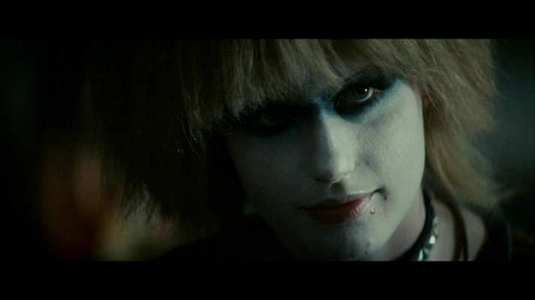
Conclusion
What can I say about Blade Runner that hasn`t been said by a thousand other reviewers, that hasn`t been discussed in countless Internet forums, that hasn`t been covered in literature and biographies? Nothing! If I state that I think it`s the best film I`ve ever seen, that it approaches perfection like no other film, then I`m merely just another voice in a chorus of approval.
I love this film. I love the story. It`s a tight, fast paced thriller (especially without the narration) that keeps you hooked from beginning to end. But that`s only the surface. What lies beneath is so much more thought provoking and rewarding. Philip K Dick`s story is presented as an allegory, an attempted insight into the human condition. What defines humanity? What is the soul? The people of 2019 have in effect created a slave race, and programmed in differences to make that distinction easier to bear. The replicants are stronger, smarter, but are dead within four years. Humans can barely form discrete personalities and individualities in that time. Philosophical questions are asked of whether a child is sapient and sentient from birth, or do those skills have to be taught and developed. At what point is a child a distinct human being? Is it the first time it says `no!` or is it the first time it begins to visualise beyond itself, begins to empathise with others? Is a four year old ever concerned with what others may feel? By that definition, some people can never be considered human. But if replicants never live long enough to pass that definition, then they can be considered subhuman. Of course the lie to that theory comes across in the film, when it transpires that the replicants are more human than human, that they question their very existence, they want to touch the face of God, to ask their creator for more life. The beauty of good science fiction is that you can draw more than one allegory. With medical debates now raging about the benefits and ethics of human cloning, this film takes on even more relevance. You can also attribute other societal aspects to the story. Make the replicants illegal immigrants, and you provoke another line of thought, make them another religion and then you are travelling through another ethical minefield. It`s a genius bit of storytelling that will always remain enduring.
I love the look of the film. It`s a beautiful cross fertilisation of past and future that looks stunning, a melange of colour and form, a menagerie of characters, a fully created and lived in future dystopian vision that fills every inch of the anamorphic frame. Future noir it`s been called, and the run down retro look clashes with the futuristic to astounding effect. Los Angeles of 2019 is a polluted, rain soaked urban nightmare, overcrowded and decaying, while at the same time vibrant and bustling in its cosmopolitan mayhem. East and West collide in a neon overload of cultures, which has turned out to be remarkably prescient. We may not be taking GCSE City Speak in school, but the fastest growing economic superpower is China. There`s also the impending global catastrophe of pollution and resource depletion. We don`t have flying cars, Offworld colonies or replicants, but climate change is upon us, overpopulation is inevitable as is the pollution that comes with it, and resources are dwindling. We`re much closer now to 2019 than we are to 1982.
I love the sound of the film. Vangelis` score is absolutely divine. Like the best soundtracks it`s as much responsible for the film`s success as any other element, if not more so. The retro futurism applies to the music as well, with the 1920`s sensibilities of `One More Kiss Dear` to the electronica of the main theme. It`s a collection of world music and styles that suit the film down to a tee, supporting the story and seamlessly becoming part of the whole, yet having the strength and individuality to stand out when required.
I love the performances. Harrison Ford is perfect as the hard-bitten cynical detective who goes on a journey of self-discovery as he hunts the replicants. He`s the ideal anti-hero, his assignment actually makes him the bad guy, he`s ordered to hunt and kill in cold blood. It explains his cynicism and detachment, but all that changes when he meets Rachael, and has to interact with a replicant as a human being. Regardless of what happened behind the scenes, the relationship between Deckard and Rachael works perfectly, and grows with their exploration of their natures. The replicants are played as childlike innocents, with a stunning performance by Rutger Hauer as Roy Batty in particular. The irony of the story is that the human characters are careworn, cynical, downtrodden, and lifeless, wrapped up in their own worlds and detached from real life, fading away into the morass of humanity. The replicants are the most human of all. They have the naiveté of children, the sense of wonder, the energy and vitality of the young. There is no subtext to them, they feel emotions completely, and like children are fascinated with exploring the world around them. Because they are played in this way, they stop being the scary villains and start being the heroes. When Batty confronts Terrell demanding more life, you understand and empathise. Even though his actions are monstrous, you know exactly why he is acting that way.
So for me, Blade Runner is as good as it gets. It`s thought provoking, entertaining, visually stimulating, and the music is to die for. Best of all, despite the corporate logo kiss of death, it`s essentially timeless.
I first bought Blade Runner on VHS back in 1987/88. I didn`t think much of it. I was probably a little young to appreciate the story, but the pan and scan image, topped off by that voiceover didn`t help. It wasn`t until 1992 that I `discovered` the film with the Director`s Cut. For 15 years now, that has been my Blade Runner, and I was feeling a little worried about any new changes, especially changes that affect the story and characters. I`m more than satisfied with the `Zhora` corrections, the reinstatement of the violence, the special effects tweaks and the reinstatement of some footage. It`s all transparent and practically unnoticeable unless you are a fiend about the film. But character and plot changes, even minor ones will be something I have to live with for a while before they settle with me. "I want more life, father!" is a simple alteration that makes the most sense given the character of Roy Batty and the story. Yes, profanity is `cool`, but given the character arc, the altered line is much, much better. But, if there is one thing I like in films, it`s a little ambiguity. The new unicorn sequence works to shift the balance on the `is Deckard a replicant or not` question, and shifts it firmly towards the `he is` camp. True, the Director`s Cut practically came out and said he was, but the Final Cut pretty much underlines it. I`m not so certain, or rather I would rather not be so certain. After all, there is a certain irony in a human being taught the meaning of humanity by a bunch of machines. But the correction that niggles me the most is the dialogue correction that gets rid of the anomalous `fifth` replicant. Fans could debate the identity of the fifth replicant until they were blue in the face, was it Deckard, did it refer to Rachel, could it even be Holden? That elusive fifth replicant even became a major plot point in the spin-off Blade Runner novels by K.W. Jeter. Now with the ease of a sound edit, that little ambiguity is gone. Sure, it`s neat, but what`s wrong with a little scruffiness?
But these are trivial alterations, ones that will quickly become invisible after a few watches. Now if Holden shot at Leon first…
The beauty of this set is that all the evidence is there. Whichever version you prefer, you can watch, and unlike the non-anamorphic original Star Wars discs that were thrown in with the CGI updated versions as an afterthought, all the versions of Blade Runner here look as shiny and fresh as possible given their age.
I`ll be honest and say that I didn`t watch the Theatrical Cut. It`s just the International version minus a few seconds of violence, and what I really needed to see was how effective the branching was on the third disc. Watching the International and Director`s Cuts was enough to assure me that it`s all been implemented as flawlessly as possible. Watching the International Cut also made me realise that the voiceover has been a little unfairly maligned. There`s not all that much of it in actuality, only four or five lines in total, but they are absolute clangers inserted at the moment where the film should speak for itself, and mostly they state the blindly obvious. There`s no getting over that ending though.
I`m still a fan of the Director`s Cut, after all it`s my Blade Runner, the one that I have lived with for 15 years, although I doubt it will take as long to switch my allegiances to the Final Cut. It does become clear that the DC is slightly ponderous, and could be more tightly edited. However, I find I do prefer the version of Tyrell`s death in the Director`s Cut. The violence is implied and more shocking for that. But it`s a minor personal preference.
I had never seen the Workprint before, and was looking forward to it almost as much as the Final Cut itself. Unfortunately it was at this point I learned that too much of a good thing, even Blade Runner can wear a person down. I watched a film that I know pretty intimately already, four times in one week, more if you count the commentaries. It`s enough to numb even the most fervent of fans, and instead of noting major differences, I found myself noting trivia, while the films all began to blur into one. But the Workprint is an interesting alternate version of Blade Runner. It`s undeniably the same film, but a few alternate takes are used, some scenes are longer, some are cut shorter, and for a completist it`s the icing on the cake. What I found indispensable about this disc was the Paul M. Sammon commentary, as what he has to say is well worth listening to, and while I was beginning to drift watching the Workprint, I found that I was raptly paying attention to his comments.
So there we have it, more Blade Runner than anyone can handle. Of course you don`t have to review the thing, and can watch it at your leisure. Taking your time and savouring five discs of cinema history and associated documents is preferable to indulging in information overload over the space of six days. If I don`t see Blade Runner again for a year, it`ll be too soon… Well, maybe six months.
For after watching the shiny new print, Blade Runner has merely cemented its place in my affections. It`s cinema magic, hard sci-fi that isn`t sterile and remote like 2001, a visionary piece of cinema that brought to life a complete and developed world that has influenced filmmakers, authors, and musicians ever since. It was one of those films that changed everything that came after it. One of those epochal moments that people at the time never notice, but after the fact always look back on in awe, wondering why we ever did things any other way. It`s a film that recommends itself. You can pick up the first two discs as a separate release, but why bother when the five-disc set is so affordable. The packaging is so much more attractive, the tin is tactile and lovely to gaze upon, and you get the sort of extra goodies that you leave in the original wrapping to preserve their value, and take care not to breathe upon. The real magic is in those five discs though. With five versions of the film, plus hours of extra features, this is as comprehensive an experience as you could possibly want. Now leave me alone, I`m going to load up the old PC game and dust off those spin-off novels.
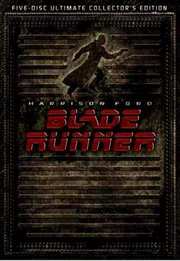
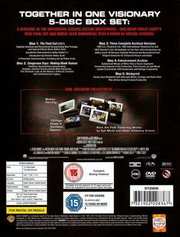
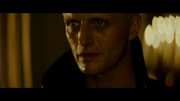




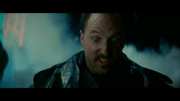
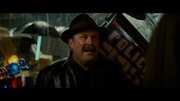
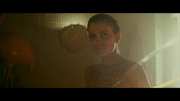
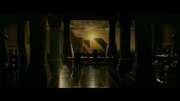
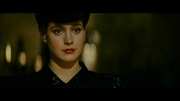
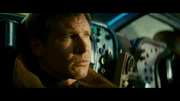
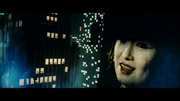
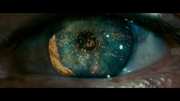
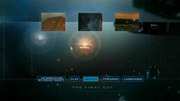
































Your Opinions and Comments
Be the first to post a comment!